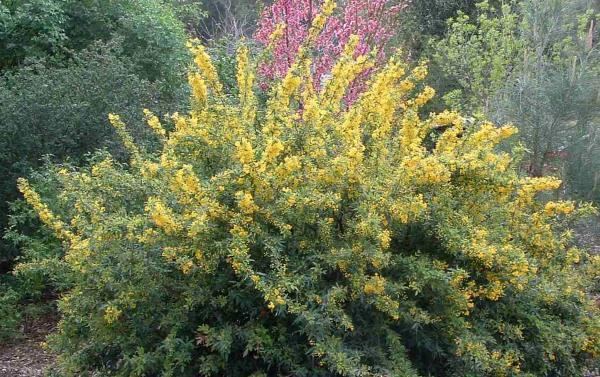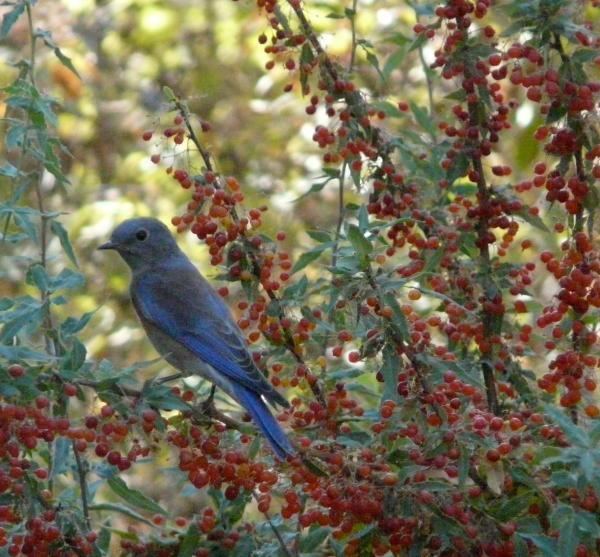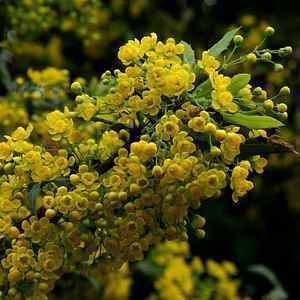Kingdom Plantae Family Berberidaceae Scientific name Mahonia nevinii Rank Species | Order Ranunculales Genus Mahonia Higher classification Barberry | |
 | ||
Similar Barberry, Mahonia pinnata, Mahonia fremontii, Mahonia repens, Berberidaceae | ||
Western bluebirds eating mahonia nevinii berries
Mahonia nevinii (syn. Berberis nevinii), known by the common name Nevin's barberry, is a species of flowering shrub in the barberry family.
Contents

This plant is endemic to southern California, where it is known from very few occurrences in the chaparral of inland canyons and foothills. It is a federally and state listed endangered species. There are thought to be about 500 individuals remaining, with half of those being naturally occurring plants. It is also widely cultivated in gardens and parks.

Description

Mahonia nevinii is an erect shrub approaching a maximum height of 4 metres (13 ft). It has a dense foliage of dark green to bluish-green spiny-toothed, spear-shaped leaflets.
It flowers in racemes of 3 to 5 bright yellow cup-shaped, layered blossoms. The fruit is a spherical reddish berry appearing in bunches, in the summer.
Some botanists treat Mahonia as part of the genus Berberis.
Distribution
Populations were historically found in washes of the San Fernando Valley. There are about 21 known populations of the plant remaining, and almost all of them have fewer than 20 individuals. The populations are scattered throughout the San Gabriel Mountains and the Peninsular Ranges in Los Angeles, San Bernardino, and Riverside Counties, its distribution possibly extending just into San Diego County.
Threats to the species include habitat loss and degradation from urban development, fire suppression, and exotic plant species.
Cultivation
Mahonia nevinii is cultivated as a drought-tolerant ornamental plant by specialty plant nurseries. It is planted as a shrub in native plant and wildlife gardens, natural landscaping of parks in its range, drought tolerant landscaping, and for habitat restoration projects.
It can serve as an impenetrable barrier hedge, due to the spiny-toothed dense foliage. With berries appearing in the summer, earlier/later than other chaparral plants, it is an attractive bird food plant. The plant was introduced into cultivation in California by Theodore Payne.
